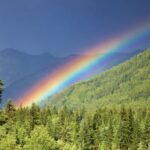Lessons from the field in Uganda
There is much to be learned, earned, and gained from opening our minds, stepping out of our silos, and bringing the likes of NGOs, corporates and investment firms to the same boardroom (or better yet, onto the same soil) to discuss how to make nature-based solutions bankable. This article provides examples of cross-sectoral initiatives aiming to do just that, while highlighting a case from the field in the Greater Virunga Landscape (an area stretching across the Democratic Republic of Congo, Rwanda and Uganda), where this challenge is explored.
When NGOs and investment banks become friends
The traditional NGO-private sector divide is narrowing. NGOs and funders of traditional donor capital are embracing the private sector approach as they realize that their initiatives and funds have a limited scope for reaching both impact scale and longevity. This private sector approach has the ability to move quickly, reach scale, and if businesses are run responsibly they can also be there for the long-term. Likewise, the private sector is inviting NGOs and donors to the table to solve their challenges of legitimacy in the sustainable development era. Private entities, whether in business or finance, are seeing the value in collaborating with traditional philanthropic heavyweights in order to create the enabling environment for increased business opportunity, supporting political advocacy, market development, and other risk reducing initiatives.
In the forest and land-use space in developing geographies, partnerships between NGOs and the private sector are mounting. Although these initiatives differ in their specific mission, geography, and sector, what they all have in common is that they create the infrastructure required to convene the strengths of both the NGO and private sector. This in turn means that more nature-based solutions projects can become bankable in the geographies that need it most.
Some examples of these include:
- The Dutch Fund for Climate and Development (DFCD) – Funding is provided by the Dutch government and managed by a consortium of partners (the Dutch development bank FMO, Climate Fund Managers, WWF Netherlands, and SNV Netherlands). The DFCD aims to provide finance and technical assistance to projects with a focus on climate change adaptation, to mobilize external private sector funding at scale.
- The Convergence platform – As the global network for blended finance, Convergence unites public, private, and philanthropic investors, as well as sponsors of transactions and funds, to connect with each other on blended finance transactions. It also provides tailored trainings and research.
- UNEP’s Restoration Seed Capital Facility (RSCF) – A funding facility established to encourage more private fund managers and investment advisors to set up new funds that focus on forest landscape restoration. This is achieved through supporting prohibitive early development costs.
- Initiative 20×20 – A Latin American, country-led effort in response to the Bonn Challenge to restore 20 million hectares of forests, farms, pasture and other landscapes in Latin American and the Caribbean by 2030. There are more than 70 technical organizations supporting the initiative, and USD 2.5 billion in private investment deployed.
- The Nature Conservancy’s Africa Forest Carbon Catalyst (AFCC) – Supports projects and businesses in Africa that avoid or reduce CO2 emissions, and restore or protect forest. The AFCC underwrites social objectives through providing donor catalytic capital to unlock at least 30x the philanthropic capital in additional direct financing.
- USAID’s Green Invest Asia – Provides technical assistance to sustainable agriculture and forestry businesses in Southeast Asia, thereby supporting them to be more attractive to commercial investors. Green Invest Asia also supports these businesses through making the connections to investors.
The private sector is also co-creating its own initiatives, as evidenced by the recent announcement of Apple’s Restore Fund, where it partners with Conservation International and Goldman Sachs to deploy USD 200 million for forest restoration projects. The fund aims to remove at least one million tonnes of CO2 annually, while also providing financial returns for investors.
The road to Bankable Nature Solutions with WWF
WWF is also leading the way in supporting the commercial viability of nature-based solutions, or Bankable Nature Solutions (BNS). In this report, WWF has provided blueprints for how funding can be directed into projects that can create positive environmental, climate and social benefits, as well as financial returns.
A case study in Uganda
Back in mid-2019 (in the good old days, when it was still possible to travel freely), I had the good fortune to participate in a study tour to the Greater Virunga Landscape (GVL) in Uganda, hosted by WWF Uganda. The stakeholder gathering showcased the collaborative landscape restoration efforts in the region that are being driven by WWF and local communities to restore the vulnerable, highly populated, and highly cultivated, previously forested land in this rich ecosystem. The video above shows the region and highlights the opportunities and challenges of the restoration project.
One of the primary objectives of this study tour was to identify what was needed to transform this environment and social-centric initiative into one that also contained a commercial element and was attractive to investors. Raising the economic profile of this landscape restoration effort – that planted thousands of hectares of degraded hillsides with commercially attractive tree species – would not only benefit the resilience of the landscape and local people’s livelihoods, but position it for scale and long-term viability.
The initiative has been making giant strides in terms of biodiversity enhancement, protection of the neighbouring Congo basin, securing slopes in heavily degraded sites, and providing alternative livelihood opportunities. In the deep dive to understand what was required to make it bankable, there were two primary items identified as needing work:
- Developed wood markets. The first major hurdle in making this project bankable was the lack of well developed, formal, transparent, and standardized wood markets – which is a wider challenge for Uganda.
- Commercial partner. The second challenge was the absence of a centralized, commercial partner to standardize and oversee silvicultural and harvesting practices, as well as facilitate the logistics of log transport and wood processing.
The consequences of these gaps appeared in suboptimal tree growth, unsafe working environments, wood waste from primitive processing, and weak price recovery.
The GVL forest landscape restoration initiative requires a number of foundational issues to be resolved before terming it bankable and seeking investor capital, but the gathering of stakeholders from both the NGO and private sector, as well as the communities themselves, has been an important step in its progress.
The cornerstone element of a successful blended finance model
The context I described above fits squarely in the box of needing an NGO-private sector partnership. Without both parties at the table, the environmental and social mission can create a lot of impact but will lack the building blocks to attract the private capital that is ultimately required to sustain it. On the flip side, investors will never look at the opportunity unless the business case is clear, and the risks are understood and reduced.
Here, WWF has the opportunity and has really stepped up to the plate to resolve these investment barriers by asking the investment community what is needed to make this project bankable. In the BNS report I mentioned earlier, WWF promotes blended finance structures, where donor or highly concessional capital, corporate climate finance, and private investment capital are mingled in different ways such that multiple impact and financial objectives can be achieved, project risk can be reduced, and sustainability strengthened. In such a set-up, project initiators need to bring these different actors together to ensure that each source of funding has its objectives met. It is no use to set up a blended vehicle or strategy with only one of the parties at the table, because the chance of creating something that is not fit-for-purpose by the absent party could very well result in a strategy or project going unfunded.
How I can help you design your own unique NBS investment strategy?
With nearly ten years of working with forest investments in emerging and frontier geographies, I understand what investors need when sourcing projects, co-investors and other partners, in order to meet their commercial and impact objectives.
If your investment organization is grappling with how to best design a commercially viable investment strategy focusing on forest-linked, nature-based solutions and sustainable development, I can support you. I will design a strategy that is risk-reduced, commercially viable, and backed by blended finance co-investors or partners, so that your unique objectives can be met. If you are interested to learn more about how I can support you, please do reach out.




